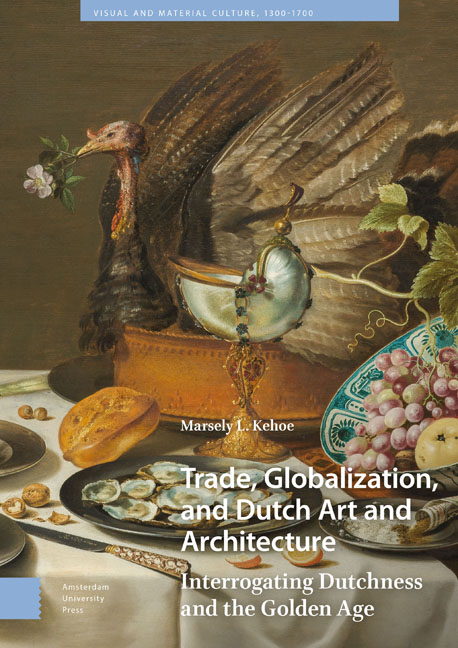Book contents
- Frontmatter
- Contents
- List of Illustrations
- 1 Introduction: Grasping at the Past
- 2 The Gilded Cage: Dutch Global Aspirations
- 3 Gathering the Goods: Dutch Still Life Painting and the End of the “Golden Age”
- 4 Dutch Batavia: An Ideal Dutch City?
- 5 Simplifying the Past: Willemstad’s Historic and Historicizing Architecture
- 6 Conclusion: The “Golden Age” Today
- Works Cited
- Acknowledgements
- Index
4 - Dutch Batavia: An Ideal Dutch City?
Published online by Cambridge University Press: 13 February 2024
- Frontmatter
- Contents
- List of Illustrations
- 1 Introduction: Grasping at the Past
- 2 The Gilded Cage: Dutch Global Aspirations
- 3 Gathering the Goods: Dutch Still Life Painting and the End of the “Golden Age”
- 4 Dutch Batavia: An Ideal Dutch City?
- 5 Simplifying the Past: Willemstad’s Historic and Historicizing Architecture
- 6 Conclusion: The “Golden Age” Today
- Works Cited
- Acknowledgements
- Index
Summary
Abstract: Batavia (now Jakarta, Indonesia) was planned from its inception as an ordered, gridded, and canalled eastern trading capital, and should have represented a Dutch ideal, yet it failed from the outset, as stagnant canals spread disease and the social order fragmented. This chapter argues that hierarchy in this city, rather than a deviation from Dutch values, is integral to both this colonial environment as well as Dutch planning more generally. The betrayal of Dutch social values, instead, was that the hierarchy in Batavia was made visible in behavior, dress, and the form of the city itself, as seen in representations of the city in text and image. Dutch hierarchies were meant to remain hidden under a pretense of egalitarianism.
Keywords: city planning, hierarchy, sumptuary laws, grid
In the foreground of Andries Beeckman's The Castle of Batavia (1661), a merchant in European attire strolls through a marketplace with his Eurasian wife on his arm, as a small servant struggles to hold a parasol above their heads. (plate 7) This parasol was meant on the one hand to protect them from the harsh tropical sunlight, and on the other to function as a status symbol, an aspect underscored by the presence of the servant. In 1647, such markers of status had been outlawed for all but the very highest-ranking Dutch East India Company (VOC) officers, namely the governor-general and his council—others could only use a parasol if holding it themselves. Dutch Batavians, however, much like the merchant in Beeckman's painting, continued to display their wealth and status through ostentatious dress and behavior, thus muddling the expression of proper social rank. High-ranking VOC officials and later observers considered this behavior very unDutch. Such displays violated social decorum and undermined the cohesion of what was already a worryingly small minority Dutch population among the city's diverse ethnicities. Observers then and now have suggested that obsession with rank was not a Dutch behavior, but rather a sign of the influence of local cultural practices, challenging the Dutchness of the colonizers. This eighteenth-century concern with what is and is not Dutch redefines Dutch culture as egalitarian, and implies that this trait is inherent and hearkens back to the so-called Dutch “Golden Age” of the previous century.
- Type
- Chapter
- Information
- Trade, Globalization, and Dutch Art and ArchitectureInterrogating Dutchness and the Golden Age, pp. 125 - 164Publisher: Amsterdam University PressPrint publication year: 2023



